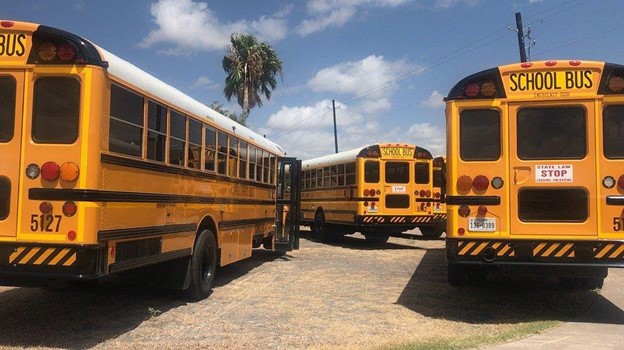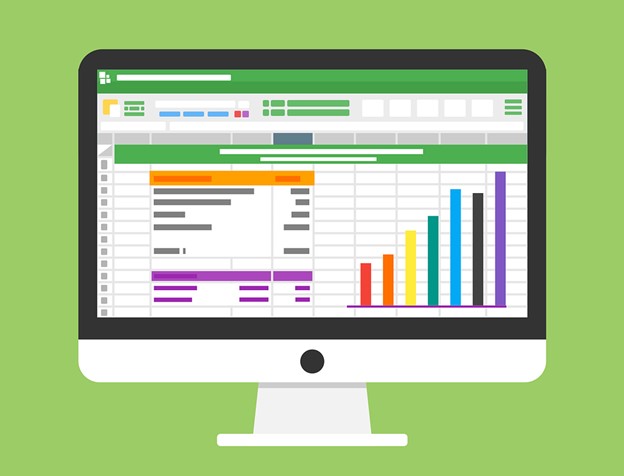
Image Credit: ernestoeslava / Pixabay
Automation within every industry is more important today than it ever has been, and school bus routes are no exception. Finding ways to make sure buses safely get to and from schools while performing at maximum efficiency is crucial to running a successful school bus fleet. Despite some slow technological advances in the school bus industry, school buses are safer and more efficient than ever today. There are, however, many things school districts have to do to make sure school bus fleets are as efficient as possible. The following tips can be used as a guide to improving fleet performance.
Know the Counts
First of all, school districts must be aware of how many students they need to transport and where exactly each one needs to be picked up and dropped off. These numbers can change drastically year-to-year as new students come and others go. Families move around all the time, and while school districts can project how many students they may have each year, they will need to get the exact count before the school year starts. School bus scheduling software does a phenomenal job of tracking which students need to be at which schools every day and can also be updated with adjusted city limits and newly built residential areas.

Image Credit: 200degrees / Pixabay
Maintain Records of Students, Drivers, and Buses
School bus routing software has continued to offer more features and capabilities that help with field trip management as well as other logistic matters. This software allows for more reliable bookkeeping and records management. It also allows school districts to seamlessly retrieve information on students if needed. This may include personal information such as date of birth, address, medical conditions, emergency contacts, and custody arrangements (if applicable).
School transportation software also allows users to maintain information about the district’s drivers, including their personal information, hours worked, routes traveled, certifications, violations, and more. Of course, it also maintains records on a district’s fleet including how old the buses are, miles traveled, and how many students each can hold. Tracking buses and their maintenance needs can help school districts know when it is time to take them in for tune-ups to ensure their reliability.
Be Transparent
Of course, any bus routing software or fleet trip management technologies will require funding, so it is important to ensure stakeholders and school officials understand the importance of them. Schools and parents may have to adjust to some new policies and procedures, which they may not be happy with initially; however, if the changes prove to be effective, they will be more inclined to be comfortable with them. These include different routes, pickup times, and drop-off times that may end up improving performance and efficiency.
Reduce Stops to Save Time
Of course, a simple yet complex component of optimizing school bus routes is reducing the number of stops required. School bus GPS routing software can help determine which route would be the best and would allow drivers to make less stops along the way. Less stops mean that drivers can utilize less gasoline, stop the engine less, and get students from point A to B in a shorter amount of time. While some students may have to walk farther or take a different bus than they are accustomed to taking, doing so can improve the efficiency of a district’s fleet.
Rearrange Routes and Buses to Save Time, Too
As mentioned, improving school bus fleet efficiency cuts down on the time it takes to transport every student to and from school daily. Bus routing software can help districts pinpoint exactly which routes will take the least amount of time while also ensuring that all students are accounted for. The software may also demonstrate that rearranging the order of stops could be beneficial, as that may actually save time, too.
Pickup and drop-off locations may vary, but rearranging routes in each area to save even just a few minutes is a great adjustment. If you’ve ever wondered why some school buses are much smaller than others, it is likely because a school bus route finder system has determined using a small bus for a more remote area or smaller radius would be more efficient than having a large bus transport certain students.
On that same note, it is important to remember that certain students may require specific buses that are fitted with special equipment such as assistive devices for special needs students.
It is also important to note that many school districts have school buses sitting idly in parking lots. This can turn out to be a waste of resources and money, so arranging routes for these buses and maximizing the usage of functional ones can help avoid losses. Using advanced school bus scheduling software can help school districts make sure their buses are all being used at their highest performance.
Don’t Be Afraid to Combine Schools
School transportation software may also help school districts determine that it is useful and more efficient to combine students from different schools into one bus. Having separate buses traveling to the same areas may utilize more time and resources than necessary, so increasing the utilization of each bus’s capacity can also work towards maximizing school bus routing efficiency.
Communicate with the Team
In any industry, there are bound to be snags and issues that arise. Especially when it comes to sick drivers, school bus management teams should always keep an open line of communication. School bus management software can allow users to get in touch with one another and help each other remedy any flaws that may come up, including assigning a substitute driver if needed.
Prepare for Fleet Issues
No school district wants to have any issues and would prefer every school bus route to run seamlessly, but this is not possible every day. Even if the fleet is regularly maintained and passes inspections, problems inevitably may arise. Having a few backup buses fueled up and ready to go in case of maintenance problems with other buses is always a smart idea.
Know the Local Transportation Laws and Conditions
Field trip management software can also use its technology to map out certain road and traffic conditions. This includes factoring in speed limits and the average amount of traffic specific areas typically have each day. Of course, if one area is generally more congested than other ones, school bus routing and the quantity of buses in that area may have to be adjusted accordingly.
Safety First
Perhaps the most important part of operating a school bus fleet is ensuring students are safe. Statistically, school buses have one of the lowest rates of traffic accidents compared to other forms of transportation, and this is due to certified drivers and other means that have mandatorily been put into place. Parents trust buses to get their children to and from school, so it is critical that they are safe at all times. Making sure school buses have the proper safety equipment such as warning lights and stop signs is crucial to student safety, especially when it comes to loading and unloading the buses.
Conclusion
Managing a school bus fleet can be a challenge, especially in larger school districts or those who are short on funds. However, optimizing school bus routes can result in maximum performance and efficiency of these fleets and help get students to their destinations safely. By implementing the tips outlined above, school districts will be able to run successful, secure fleets.



